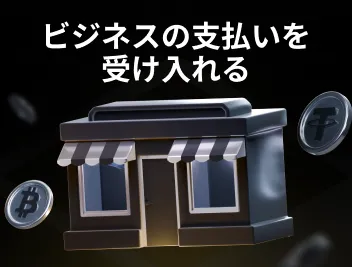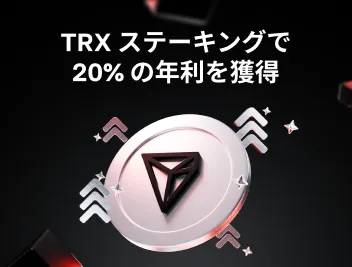
仮想通貨の流通量: ビットコインが上限に達したら
今日、ビットコインはその限られた発行量とコインあたりの高い価値で知られており、市場で最も人気のある暗号通貨とされています。現在、19,732,151 BTCが存在し、ビットコインの最高価格は3月14日に1コインあたり$73,700という史上最高値を記録しました。しかし、すでに存在するビットコインの数と、まだ採掘されていないビットコインの数はどれくらいでしょうか?この記事では、この革新的なデジタルコインの総量、マイニングプロセスのニュアンス、および市場全体の将来にとってのビットコインの重要性について議論します。
ビットコインの性質
まず定義を見てみましょう。ビットコインは、ユーザー間で仲介者なしに取引を行うことができるデジタル通貨です。ビットコインの紙幣のような物理的なものは存在しません。各コインは所有者のみが利用可能な暗号鍵を持っています。このプロセスは暗号コードに基づいて構築されているため、誰でもデジタルマネーを安全かつ機密に送受信できます。
最初のビットコインは2009年にサトシ・ナカモトという名前の正体不明の個人または匿名の組織によって開発されました。サトシはオリジナルコードを書く際に、2,100万枚のコインのマイニングに厳しい制限を課す方法を使用しました。
無制限発行のコインに対するビットコインの主な利点は、マイニングされるコインの数が減少するにつれて、ビットコインの価値がより高くなり、その価値が上昇する可能性があることです。
ビットコインのマイニングはどのように機能するのですか?
ビットコインは「マイニング」と呼ばれるプロセスを通じて作成されます。ブロックチェーンネットワークにトランザクションを検証して追加するためには、複雑な数学的アルゴリズムを解く必要があります。マイナーたちは暗号パズルの正解を見つけるために互いに競争します。現在、世界には約100万人のビットコインマイナーがおり、通常、強力なコンピューターと技術を使用しています。新しいブロックがブロックチェーンに追加され、パズルを解いた最初のマイナーに一定量のビットコインが授与されます。
「プルーフ・オブ・ワーク」アルゴリズムはコインのセキュリティの基盤であり、コインの数が2,100万枚であることも重要です。ビットコインの量が限られている場合、報酬が保証されるため、マイニングとネットワークのセキュリティが奨励されます。
ビットコインの供給は、「半減期」として知られるメカニズムによって制御されています。約4年ごとに、新しいブロックのマイニング報酬が半分に減少し、新しいビットコインの作成が遅くなります。ビットコインが最初に登場したとき、見つかったブロックごとに50 BTCが作成されました。その4年後には25 BTC、その後12.5 BTC、さらに6.25 BTCになりました。2024年4月に4回目の半減期が発生し、ビットコインの価値は3.125 BTCに半減しました。このように、発行は不均一であり、コインのマイニングはますます遅くなっています。
最近、最後のビットコインの半減期プロセスについて詳しく調査しました。こちらをクリックして記事を読むことができます。

世界にはどれくらいのビットコインがありますか?
現在、世界で約1,944万ビットコインが採掘されています。これは、2009年にコインが登場して以来のビットコインの総量を示していますが、2,488,817 BTCが取引所に残っています。しかし、これらの暗号通貨がすべてアクティブに使用されているわけではなく、市場に出回っているわけでもありません。
前述のように、ビットコインの主な利点の1つは、コインがデフレ資産であるため、その供給が限られていることです。これは、需要が増加し供給が減少するにつれて、ビットコインの価値が時間とともに上昇することを意味します。通常インフレーションの影響を受ける法定通貨とは対照的に、供給が限られていることで、暗号通貨はデフレを維持します。この利点はビットコインの価値に直接影響を与え、インフレーションや経済不安から保護を求める投資家を引き付けます。
デフィシットの概念に基づく経済原則は、2,100万ビットコインの制限の根底にあります。通貨の供給を制限することで、各コインの価値は理論的に増加します。このプロセスは経済学の公式で表されます:「需要が増加し、供給が一定である場合、ビットコインの価格は上昇する」。
ビットコインの供給量の約92.5%が現在採掘されています。つまり、残りの採掘可能なコインは約156万枚です。前述のように、新しいビットコインの生成率は約4年ごとに減少し、これを半減期と呼びます。この手続きは、2,100万枚の制限最大供給量に達するまで続きます。2140年までに、最後のブロック報酬が支給される際には、すべてのビットコインが採掘されるはずです。
ビットコインの総供給量の歴史
最初のビットコインブロックはジェネシスと呼ばれ、2009年1月3日にサトシ・ナカモトによって採掘されました。ビットコインの総供給量は2,100万枚です。このブロックは、グローバルなビットコインネットワークの誕生を示し、50コインの報酬が含まれていました。サトシ・ナカモトがヨーロッパの金融部門のコンピューター集団であった可能性も議論されています。マイニングの最初の年に、2009年に110万ビットコインが採掘されました。2010年までに、この数は3,396,000 BTCに増加しました。
初期の頃は、マイニングは比較的一般的で報酬も高かったです。最初の210,000ブロックは1ブロックあたり50ビットコインをもたらしました。この初期配布段階は、ビットコインネットワークを確立し、最初のユーザーベースを引き付けるために不可欠でした。限られた供給の概念は金融の世界では新しいものではなく、ビットコインネットワークはすべてのコインが採掘されるまで、新しいコインが時間とともにますます少なくリリースされるように設計されています。たとえば、金は限られた供給があり、価値の保存手段としてよく使用されます。ビットコインもまた、元のプロトコルにハードコーディングされた限られた供給があります。これは、ビットコインの供給が中央銀行の政策とは対照的に予測可能で透明であることを意味します。
どれくらいのビットコインが失われましたか?
失われたビットコインは、特定の理由で取得または使用できない暗号通貨です。BBCの推定によれば、2024年の為替レートで約680億ドルに相当する4,000,000 BTCが回復不能に失われました。この膨大な数は、暗号資産の保管の基本ルールを理解していない場合、投資がいかに不安定になるかを明確に示しています。
失われたビットコインは市場に出回らなくなるため、供給が減少することで価格が上昇します。このケースは投資家にとって有益に思えますが、実際には市場のダイナミクスに悪影響を与えます。価格が人為的に引き上げられると、それは操作を引き起こし、結果的に価格の急落を招きます。
失われたコインが発生する主な理由は次のとおりです:
- プライベートキー、パスワード、またはシードフレーズの紛失。たとえば、新しいデバイスを購入した後、アカウントやウォレットを削除した後、オペレーティングシステムをインストールした後など、アクセスを回復するために必要です。
- 盗難。暗号通貨が詐欺師に盗まれた場合、それは戻ってきません。ブロックチェーンのトランザクションは不可逆であり、ハッカーが特別なクリプトミキサーを使用することが多いため、追跡が複雑です。
- 暗号交換の破綻。この場合、通常すべてのユーザーが資金へのアクセスを失います。
- 非アクティブなウォレット。数年間活動を示していないにもかかわらず、ビットコインを大量に保管しているウォレットもあります。これらのウォレットのビットコインは失われたり忘れられたりしている可能性があります。
1日にどれくらいのビットコインが採掘されていますか?
マイナーは1日に約450 BTCを生産し、計算は非常に簡単です:
- ブロックチェーンでは、約10分ごとに新しいブロックが採掘されます。
- これは、1日あたり144の新しいブロックが採掘されることを示しています。
- 1ブロックの報酬は3.125 BTCです。
- 3.125を144倍すると、正確に450になります。
この数は、各半減期のイベント後に減少し、新しいビットコインの作成率がさらに低下します。約2週間ごとに、ビットコインマイニングの難易度が変更され、ブロック生成率が一定に保たれます。より多くのマイナーがネットワークに参加すると、複雑さが増し、新しいブロックの採掘がより困難になります。逆に、マイナーがネットワークを離れると、難易度が下がります。
すべてのビットコインが採掘されたらどうなりますか?
研究者たちは、すべてのビットコインが採掘される2140年までに、ビットコインは現在と同様に主に貯蓄手段として残り、日常の購入のためのツールではないと予測しています。このようにして、マイナーたちは引き続き利益を上げ続けるでしょう。
しかし、ビットコインマイニングがもはや信頼できる利益源ではなくなる、より危険な状況の変種もあります。そうなると、事態は不快な方向に進展する可能性があります:
- マイナーたちは組織化してカルテルを形成し、資源を管理し、より高い取引手数料を要求します。
- 「セルフィッシュマイニング」。参加者は新しいオリジナルブロックをネットワークによって確認されていない失われたブロックとして公開する代わりに隠すようになります。これにより処理時間が遅くなり、手数料が増加します。
結論として、ビットコインはそのデフレ性質と2,100万枚のコインの制限により、世界中の投資家や愛好家の関心を引きつけました。2041年に達する彼らは。また、ビットコインの価値がその希少性の価値の成長とともに高まるため、貯蓄手段としてのビットコインの役割が高まる可能性が高いと結論付けることができます。
ご注目いただきありがとうございます!ビットコインの総供給量についてどう思うかお聞かせください。コメントでご意見をお寄せください。
記事を評価








コメント
0
コメントを投稿するにはログインする必要があります